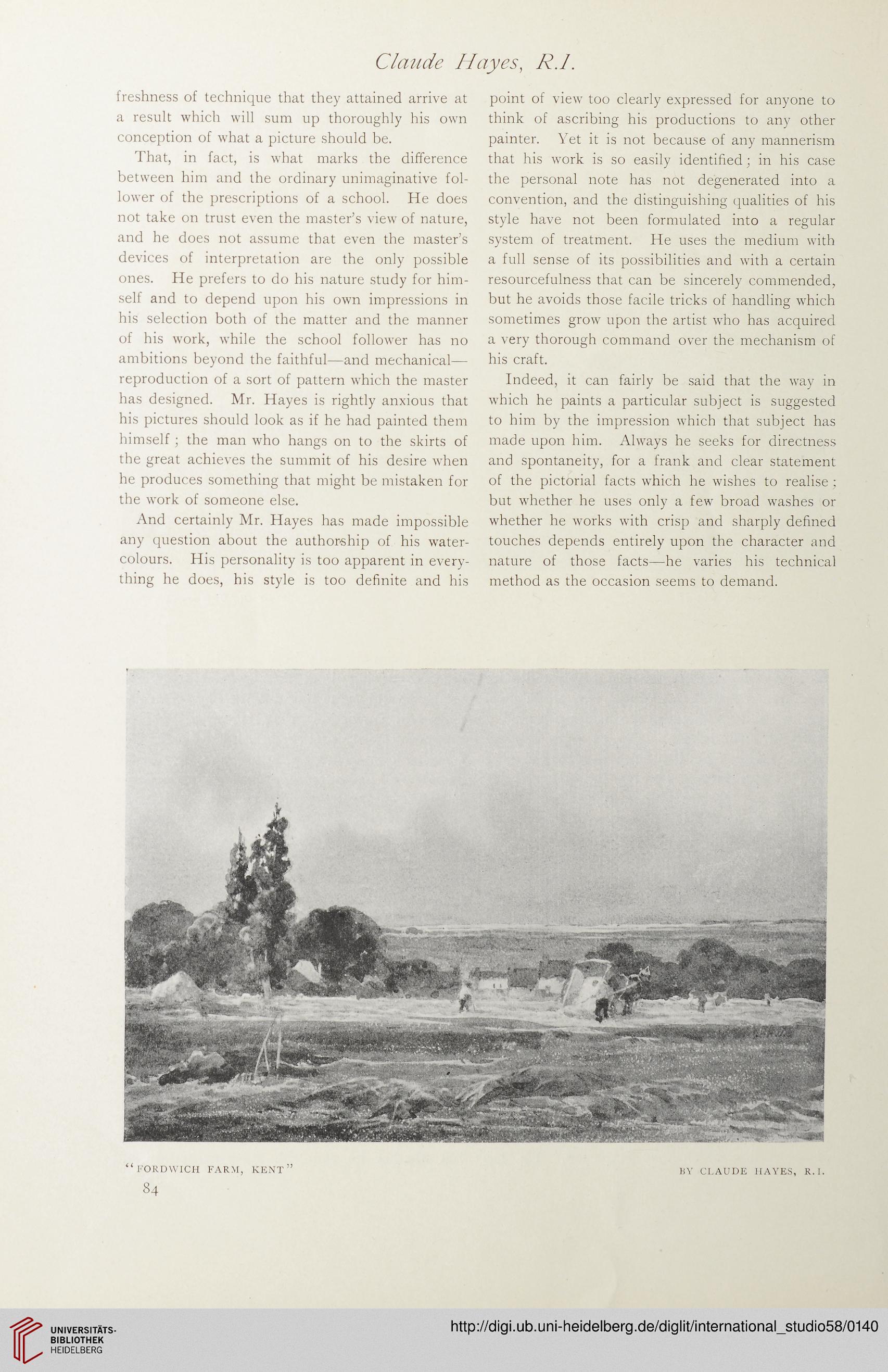Claude Hayes, R.l.
freshness of technique that they attained arrive at
a result which will sum up thoroughly his own
conception of what a picture should be.
That, in fact, is what marks the difference
between him and the ordinary unimaginative fol-
lower of the prescriptions of a school. He does
not take on trust even the master’s view of nature,
and he does not assume that even the master’s
devices of interpretation are the only possible
ones. He prefers to do his nature study for him-
self and to depend upon his own impressions in
his selection both of the matter and the manner
of his work, while the school follower has no
ambitions beyond the faithful—-and mechanical—
reproduction of a sort of pattern which the master
has designed. Mr. Hayes is rightly anxious that
his pictures should look as if he had painted them
himself ; the man who hangs on to the skirts of
the great achieves the summit of his desire when
he produces something that might be mistaken for
the work of someone else.
And certainly Mr. Hayes has made impossible
any question about the authorship of his water-
colours. His personality is too apparent in every-
thing he does, his style is too definite and his
point of view too clearly expressed for anyone to
think of ascribing his productions to any other
painter. Yet it is not because of any mannerism
that his work is so easily identified; in his case
the personal note has not degenerated into a
convention, and the distinguishing qualities of his
style have not been formulated into a regular
system of treatment. He uses the medium with
a full sense of its possibilities and with a certain
resourcefulness that can be sincerely commended,
but he avoids those facile tricks of handling which
sometimes grow upon the artist who has acquired
a very thorough command over the mechanism of
his craft.
Indeed, it can fairly be said that the way in
which he paints a particular subject is suggested
to him by the impression which that subject has
made upon him. Always he seeks for directness
and spontaneity, for a frank and clear statement
of the pictorial facts which he wishes to realise ;
but whether he uses only a few broad washes or
whether he works with crisp and sharply defined
touches depends entirely upon the character and
nature of those facts—he varies his technical
method as the occasion seems to demand.
freshness of technique that they attained arrive at
a result which will sum up thoroughly his own
conception of what a picture should be.
That, in fact, is what marks the difference
between him and the ordinary unimaginative fol-
lower of the prescriptions of a school. He does
not take on trust even the master’s view of nature,
and he does not assume that even the master’s
devices of interpretation are the only possible
ones. He prefers to do his nature study for him-
self and to depend upon his own impressions in
his selection both of the matter and the manner
of his work, while the school follower has no
ambitions beyond the faithful—-and mechanical—
reproduction of a sort of pattern which the master
has designed. Mr. Hayes is rightly anxious that
his pictures should look as if he had painted them
himself ; the man who hangs on to the skirts of
the great achieves the summit of his desire when
he produces something that might be mistaken for
the work of someone else.
And certainly Mr. Hayes has made impossible
any question about the authorship of his water-
colours. His personality is too apparent in every-
thing he does, his style is too definite and his
point of view too clearly expressed for anyone to
think of ascribing his productions to any other
painter. Yet it is not because of any mannerism
that his work is so easily identified; in his case
the personal note has not degenerated into a
convention, and the distinguishing qualities of his
style have not been formulated into a regular
system of treatment. He uses the medium with
a full sense of its possibilities and with a certain
resourcefulness that can be sincerely commended,
but he avoids those facile tricks of handling which
sometimes grow upon the artist who has acquired
a very thorough command over the mechanism of
his craft.
Indeed, it can fairly be said that the way in
which he paints a particular subject is suggested
to him by the impression which that subject has
made upon him. Always he seeks for directness
and spontaneity, for a frank and clear statement
of the pictorial facts which he wishes to realise ;
but whether he uses only a few broad washes or
whether he works with crisp and sharply defined
touches depends entirely upon the character and
nature of those facts—he varies his technical
method as the occasion seems to demand.




